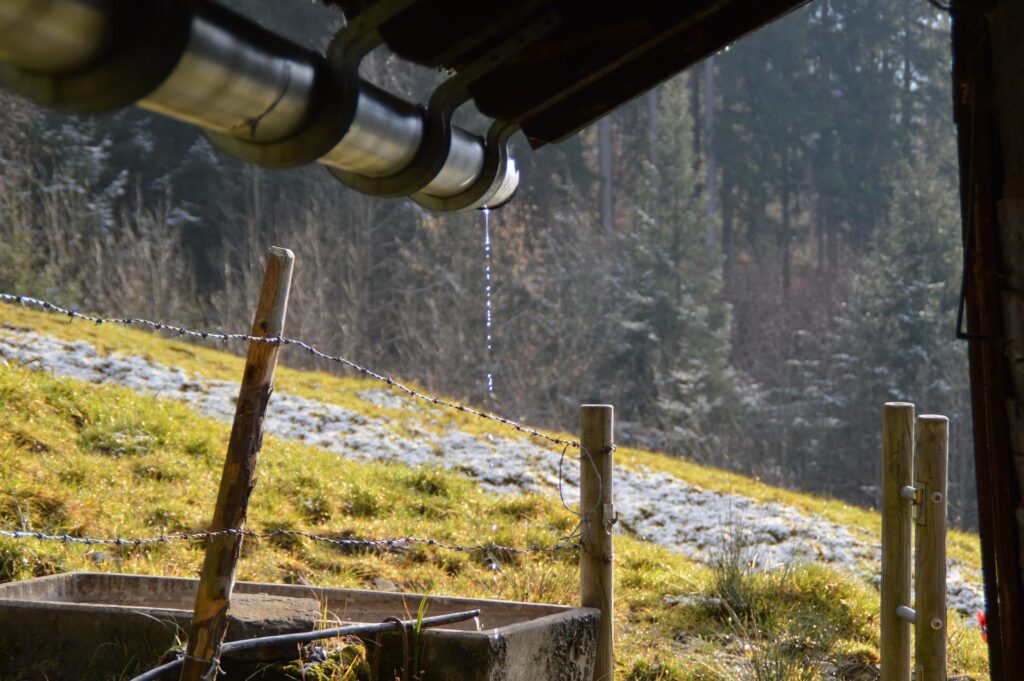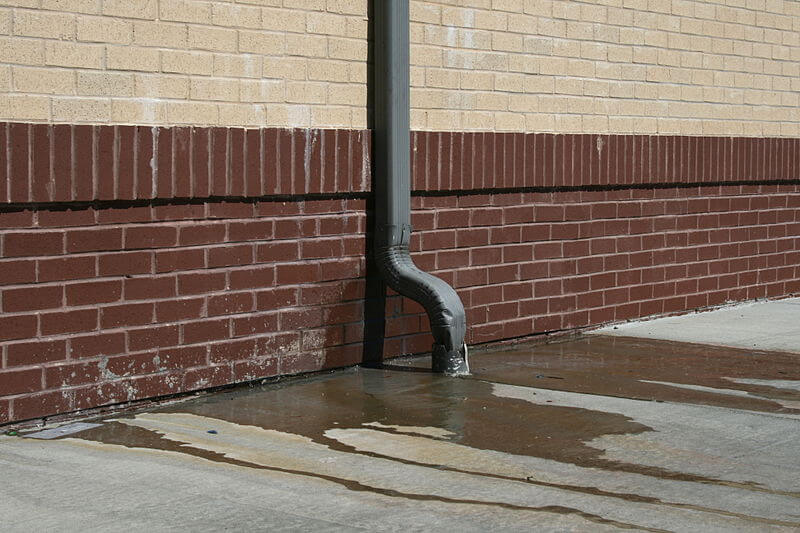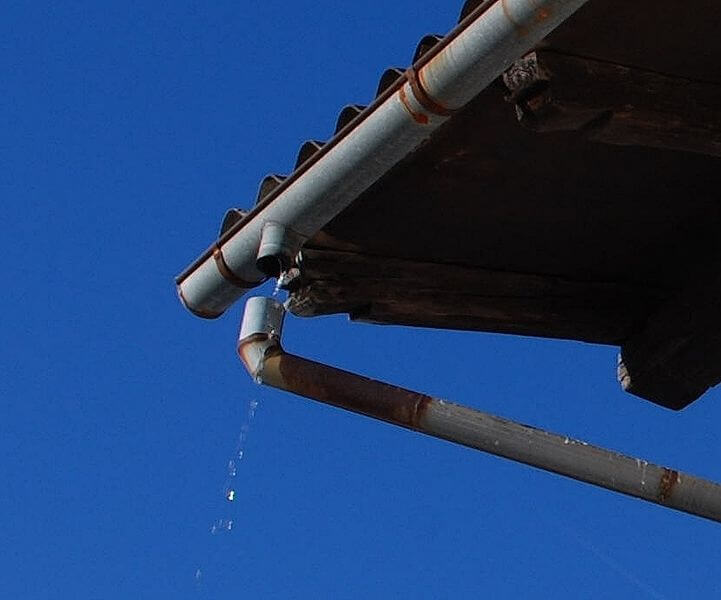
Installing a rain gutter on your own can be tricky, even if you have experience working with materials like PVC. To make things easier, follow these simple instructions when installing your gutter.
If you find out you can’t install the gutters on your own, don’t hesitate to give us a call!
Call Us!Tools and Materials
Wrench or pliers. Utility knife or scissors to cut the vinyl material. Gloves. Mask. Tape measure. Earth-moving shovel. Shovels. Caulk gun or caulk sticks. Ladder to access the roof of your home or building. Protractor (optional).
1.) Find a place on the gutter where it needs to connect to another part of the gutter, ensure you cut it at a right angle and are not in an awkward position when you need to bend the vinyl around a corner.

2. Remove the gutter from the hose and cut the first section of vinyl, ensure you cut it with a straight line from the bottom to the top. Ensure you have at least 5 inches of extra length before cutting your next section.
3.) Install an elbow fitting (shown on the left) where it will connect to another piece of gutter with a bend in it so that it can curve when you are done installing it. Use an elbow fitting with a small hole at either end to secure your vinyl so that part doesn’t dry out or deteriorate under sunlight.
4.) Cut and install another section of vinyl on top of yours that follows your existing angle and bends around corners (shown at right). Make sure you overlap the elbow fitting to ensure a solid connection.
5.) When installing the rain gutter on a slanted roof, measure the height at 4 metres and cut your sections to this exact length from the bottom of the gutter. Once you have cut all of these, install each end into your elbow fitting and caulk between each piece of vinyl with a caulk gun or caulk sticks. Ensure you are using a high quality water resistant sealant for this last step – more on this later.
6.) Measure and mark an angle onto each section of your rain gutter where it will join another piece at an angle (0°, 30°, 45°, 60°). Follow these instructions to cut the angle on your vinyl (using a protractor is the easiest way to do this).
To calculate the length of each of your cuts, take the length from above and divide by cosine(angle), then subtract 5 inches for an overlap. Cut all 8 sections and install them into their elbow fitted connectors.
7.) Repeat steps 1-5 for any remaining sections that need an elbow fitting.

8.) Remove any existing downspout from your house or building with a shovel. Dig at least 2 feet deeper than where your downspout goes.
9.) Install your downspout into this new position, ensuring the top of the cut on your gutter is pointing outward towards the weather.
10.) Place a small amount of soil into the gutter and push it into place with a shovel. Make sure your downspout is firmly sticking out of your hole deep enough so that it can’t clog by water. This is important to avoid back flooding and costly repairs later on.
11.) Install your first section of vinyl, following the angles and shapes you have drawn onto it at 0°, 30°, 45°, 60°. Adjust for an even cut (if necessary), making sure you overlap all of these joints.
12.) Caulk each joint of the vinyl with a caulk gun or caulk sticks. Ensure you are using an extra high quality water resistant sealant for this step, as you want your rain gutter to remain in place come rain and shine.
13.) Repeat steps 10-11 until you have finished your rain gutter installation. Ensure to clean off any remaining adhesive on the ground with soap and water before your next rainfall.
14.) Move onto the plumbing of your downspout into a nearby drain, ensuring it is deep enough so it cannot back flow and flood onto your roof or home (it should be at least 2 feet deeper than where it was originally).
15.) Drill a hole into your downspout (using a 3/4 inch bit) that’s twice as wide as the diameter of the pipe you will connect to it. Connect your drain pipe to this new hole using a slip fit connection.

16.) Install a plumbing cap on top of your drain pipe so that any water can be diverted out of the gutter and into the outside space around your house.
17.) Move onto how to secure your rain gutter with screws, attaching it to the roof of the home or building and ensuring it is in place with no leaks or shrinking.
18.) Give the rain gutter a test run. Run water down it to ensure there are no leaks or holes for over flowing water onto your roof, as well as ensuring a tight seal between each section of your vinyl. If there are any leaks, correct them using the caulk gun and the high quality water resistant sealant mentioned earlier.
19.) Caulk around where your downspout meets your rain gutter so that all of the joints have a tight, seamless fit together.
20. On the ground, install a splash block that diverts water coming from your downspout away from your foundation. This will prevent water from seeping in at the bottom and causing costly repairs to your home’s foundation.
21.) Make sure that you have caulk around each joint of your vinyl rain gutter so that it doesn’t leak when it rains. Water can soak through the joints and cause mold and wood rot to occur after awhile. To ensure this doesn’t happen, apply a quality sealant around each junction (shown in red) between pieces of vinyl.
22. Create a funnel with a downspout that diverts water out of the rain gutter. Use an adjustable piece of PVC pipe to create this funnel so that it works with all downspouts and sizes. Cut the pipe to your desired size (while making sure you don’t overcut). Secure the end of this piece of pipe into your downspout outlet so that it diverts all of the water flowing out of your rain gutter into your funnel.
23. Install a splash block in front of your downspout that is wedged in between bricks, stones or concrete on both sides, so no water can enter at all while you are raining.
24. Lastly, use an angle fitting at the bottom of your downspout and elbow fitting at the top to secure your rain gutter so that it doesn’t move while raining.
Conclusion
These 24 tips will help you to build a durable Edmonton rain gutter that will last through many rainy seasons to come. If you follow these steps and use the proper materials, you’ll be able to make your own rain gutter. But if you find it more difficult than you thought, feel free to give us a call. Ask us anything! 587-405-3224
Call Us!

